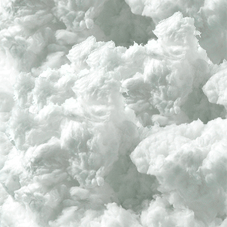“How good is Knauf Insulation’s specification and technical support?
Let’s put it this way, I’ve used Rocksilk® RainScreen Slab
for every façade project since,”
Nikesh Patel, Façade Design Manager at A2O Cladding
The Weald of Kent Grammar Annexe extension is a new three-storey satellite facility for Tunbridge Wells Grammar School for Boys in Sevenoaks. It comprises state-of-the-art classrooms for a cohort of 90 boys.
A2O Cladding were appointed by Willmott Dixon to deliver the technical design and installation of the façade, which is finished with a white and grey silicon render set against a red Corium brickslip façade. One of their first tasks was to finalise the insulation specification based on three key requirements: thermal performance, non-combustibility and sustainability.
Meeting the thermal performance challenge
The first factor, the thermal performance of the rainscreen façade system, initially proved more difficult than expected. Nikesh Patel, Façade Design Manager at A2O Cladding explained:
“U-values provided by the architect for a rainscreen façade system are a bit belt and braces because they’re based on assumptions. So, once we’ve confirmed the sub-structure, we redo them to ensure they’re an accurate representation of the building’s thermal performance.”
“The problem is the manufacturer we were working with couldn’t deliver the U-value of 0.18 W/m2K because they didn’t have the right software.”
For most applications, the simplified methodology used for calculating U-values is sufficient. But it is not recommended for rainscreen façade systems, because it does not take into account the complex interaction between the Steel Frame System (SFS) and the insulation. Instead, a blanket correction factor is applied, which can lead to the over-specification of insulation – as it had in this case.
To prevent this, 3D U-value calculations should be used. They thermally model the build-up based on the complex interaction between the insulation and the rails and brackets. This ensures greater accuracy giving the specifier a true picture of how the build-up will perform after construction, so it matches its design. But most manufacturers don’t have the capability to undertake these complex calculations in-house, so outsource the service to a third party at a cost to the contractor.
Before they went down this route, A2O Cladding asked project architect Bond Bryan for advice, who suggested they contact Knauf Insulation.
“We’d not used Knauf Insulation before so didn’t know the standard of their technical support. The biggest tick in the box was they do free 3D U-value calculations – it really helped to keep the project on track.”
Using these calculations, the Knauf Insulation Technical Support Team recommended Rocksilk® RainScreen Slab for the façade insulation. The product has a thermal conductivity of 0.034 W/mK and crucially, a depth of just 150mm would meet the required U-value.
They also recommended 150mm of Rocksilk® EWI Slab with a thermal conductivity of 0.036 W/mK to insulate the rendered external walls. A2O Cladding also decided to use Knauf Insulation’s OmniFit® Slab 35 to insulate the junctions at roof level to ensure continuity of insulation.
Fire safety at every height
All three products have the best possible Euroclass A1 reaction to fire classification, so will not contribute to the development or spread of fire, should it occur. This meant they met the second specification factor, non-combustibility.
“The Annexe extension is under 18m tall but that would never influence our choice of insulation material. The A2O ethos is that we don’t touch combustible stuff when there are suitable non-combustible solutions available. I mean why would you introduce that risk? Using Mineral Wool insulation gives us and the school peace of mind.”
Patel goes on to explain that Willmott Dixon has a reputation for quality and will only authorise the use of tested and certified systems. “As the façade contractor, it’s our job to ensure the quality of the supply chain. The fact that Rocksilk® RainScreen Slab is BBA certified for use in high rise buildings and for so many different build-ups meant it met the rigorous standards demanded for the project.”
A focus on sustainability
But choosing suppliers isn’t just about performance and fire safety. The third factor in the specification process was sustainability.
“As we finalise the technical design, we need to provide Willmott Dixon with a Technical Submittal for every product, and this includes details of its green credentials. It was another example of how Knauf Insulation makes things simple for contractors. They have EPDs for every product and all the relevant ISO standards, so our insulation specification sailed through.”
As well as producing products that improve the thermal efficiency of buildings, Knauf Insulation has been taking steps to reduce the carbon footprint of its products. One example of this is its unique bio-based binder, ECOSE® Technology, which contains no added formaldehyde or phenol. ECOSE® Technology is made from natural raw materials that are rapidly renewable and is 70% less energy-intensive to manufacture than traditional binders, so it is more environmentally friendly.
From technical support to performance and sustainability, Knauf Insulation scored top marks in all categories – which meant that A2O Cladding didn’t need to compromise on any of their specification requirements or criteria.
Knauf Insulation’s Support Makes The Grade
| T | (01744) 766600 |
|---|---|
| F | (01744) 766750 |
| E | info.uk@knaufinsulation.com |
| W | Visit Knauf Insulation's website |
| Stafford Rd, St Helens, Merseyside, WA10 3LZ |
Products by this Company









 (002)CROPV2-comp102239.png)



